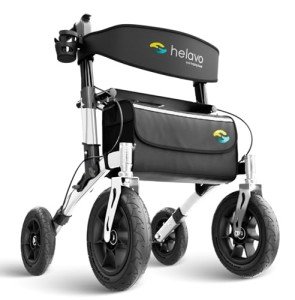Understanding Mobility Assistance: A Comprehensive Guide
In a progressively active world, mobility assistance has actually become vital for lots of people. Whether Bariatric Walker to age, injury, or persistent health problem, mobility obstacles can considerably affect every day life. This blog site post looks into the various kinds of mobility assistance, their advantages, and practical considerations for those seeking aid.
What is Mobility Assistance?
Mobility assistance includes a variety of services, devices, and modifications created to help people move safely and successfully. It aims to improve self-reliance for those with difficulties in movement, allowing them to carry out daily activities and interact with their environments.
Types of Mobility Assistance Devices
Mobility assistance gadgets can vary extensively, from easy to complicated help. The following table details some common types of mobility assistance gadgets, their descriptions, and suitable usages:
| Type of Device | Description | Appropriate For |
|---|---|---|
| Wheelchairs | Wheeled mobility gadgets for people with minimal walking ability. | Irreversible or momentary mobility needs. |
| Walkers | Frames with four legs, supplying support while walking. | People requiring a stable aid. |
| Canes | Lightweight sticks offering support; consists of basic and quad walking sticks. | Those with moderate mobility concerns. |
| Crutches | Devices designed to move weight off the legs. | Post-surgery recovery or injuries. |
| Mobility Scooters | Motorized cars offering transport over brief distances. | Those with mobility disabilities. |
| Stairlifts | Motorized chairs that go up and down stairs. | Multilevel homes with stair availability problems. |
| Home Modifications | Structural modifications, such as ramps or larger entrances. | Enhancing home accessibility for wheelchairs or walkers. |
| Transfer Aids | Devices like sliding boards or lift systems for easier transfers. | Assistance in transferring to and from chairs or beds. |
Advantages of Mobility Assistance
The significance of mobility assistance extends beyond physical motion. Here are several crucial benefits:
- Enhanced Independence: Mobility gadgets empower users to carry out day-to-day jobs independently, cultivating self-sufficiency.
- Enhanced Quality of Life: By making it possible for greater involvement in social activities, mobility assistance adds to psychological wellness and social combination.
- Safety and Support: Devices like walkers and canes offer physical support, decreasing the danger of falls and injuries.
- Access to Healthcare: Mobility assistance can streamline transport to medical visits, ensuring users receive essential care.
- Modification Options: Many mobility gadgets can be customized to fit specific requirements and preferences, guaranteeing convenience and performance.
Common Mobility Assistance Challenges
While mobility assistance can lead the way for higher self-reliance and improved lifestyle, different challenges may arise. Some of the common problems include:
- Cost: Mobility gadgets can be expensive, and insurance coverage might differ significantly.
- Training and Familiarization: Learning to utilize brand-new gadgets properly might need time and assistance.
- Ease of access Issues: Not all environments are equipped to accommodate mobility devices, leading to potential barriers.
- Stigma: Social stigma around using mobility aids can affect self-esteem for some individuals.
Offering and Receiving Mobility Assistance
To make sure the most effective assistance, it is necessary for both service providers and recipients of mobility aid to think about numerous elements:
- Assessment of Needs: A thorough evaluation by a health care professional can identify the particular type of assistance required.
- Trial Period: Trying out gadgets can help people find the one most matched to their way of life and preferences.
- Regular Maintenance: Maintenance of mobility devices makes sure durability and safety.
- Education: Providing training on the correct use of mobility aids is essential for taking full advantage of advantages.
Mobility Assistance FAQs
Q1: What kinds of mobility aids are readily available?A: Common mobility aids consist of wheelchairs, walkers, walking canes, crutches, and scooters, to name a few. Each device is created to meet particular needs and preferences.
Q2: Where can I get mobility assistance gadgets?A: Mobility devices can be gotten from medical supply stores, online retailers, or through healthcare service provider suggestions.
Q3: Will my insurance cover mobility assistance gadgets?A: Many insurance coverage strategies use partial protection for mobility help, however coverage can vary based on the policy. It's advisable to contact the insurance coverage company for particular information.
Q4: How can I adjust my home for mobility assistance?A: Home modifications like ramp setup, wider doorframes, and get bars in restrooms can greatly enhance accessibility. Consulting with a physical therapist can offer tailored solutions.
Q5: How do I select the right mobility aid for me or a loved one?A: Assess the person's mobility requirements, weight capacity, and lifestyle. Checking out various devices can also assist in choosing the one that feels most comfortable and practical.
Mobility assistance plays a crucial role in improving the self-reliance, safety, and quality of life for individuals facing mobility difficulties. From easy walking canes to complicated mobility scooters and home adjustments, a range of alternatives exist to fulfill distinct needs. As society continues to recognize the importance of accessibility, the integration of mobility assistance solutions into everyday life will enhance, guaranteeing that everyone has the chance to lead a satisfying and active way of life.
By comprehending the readily available options and advantages, people and their households can make educated decisions that support their mobility needs.

